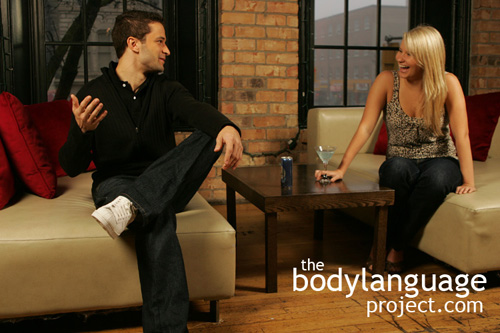
Unlike this fella, good liars often appear very charismatic and this trait helps carry them through their lies.
Paul Ekman coined the term “duping delight” to explain possible reasons for an increase in certain cues while lying was taking place. For example, fear and guilt associated with lying should decrease nonverbal cues such as eye contact and smiles, but the research shows us that eye contact usually increases during lying. Ironically, it is the reverse that is commonly thought of by the general public to be true. That is, most people think that eye contact decreases during lying. Two possible explanations exist for an increase in eye contact and smiling. One is that smiling happens more often because the liar is experiencing pleasure with the act of lying which has been extensively proven through research on psychopaths, con-men and pathological liars, the second says that a smile is in fact due to stress and embarrassment which causes a stress smile. An increase in eye contact is also explained in terms of a desire to measure the efficacy of the lie. The liar holds eye contact to watch for signals of disbelief in his counterpart to allow him to calibrate his tactics accordingly. So by this reason, the liar holds eye contact more than truth tellers in order to gauge how well his lie is being pulled over on his victim and to revel in joy as his ploy washes over his victim.
Duping delight means that nearly any signal can be used during a lie to convey honesty, and the greater the pleasure felt by the liar, the more relaxed and honest they will appear. The converse can happen too, the duper can appear more excited and happy throwing a wrench in this signal as universal amongst liars. Signals of duping delight can include higher voice pitch, faster and louder speech, increases in nodding and smiles, and use of more illustrators. Also, the more a lie is being perceived as true, the stronger these signals will be since the excitement of the liar increases in tow. Thus, just because some signals are present, does not necessarily mean that at lie is either present or absent. Although the willful modification of our natural traits often make us appear more or less sincere. For example, a perpetual feigning of friendliness comes across as phony. Incidentally, things like voice pitch, which can be difficult to control amongst all other factors when lying, might go unusually high through anxiousness when the true intent was to appear enthusiastic. It is the difference between a normal interaction and one that is unusually energetic that gives the dupers away.




